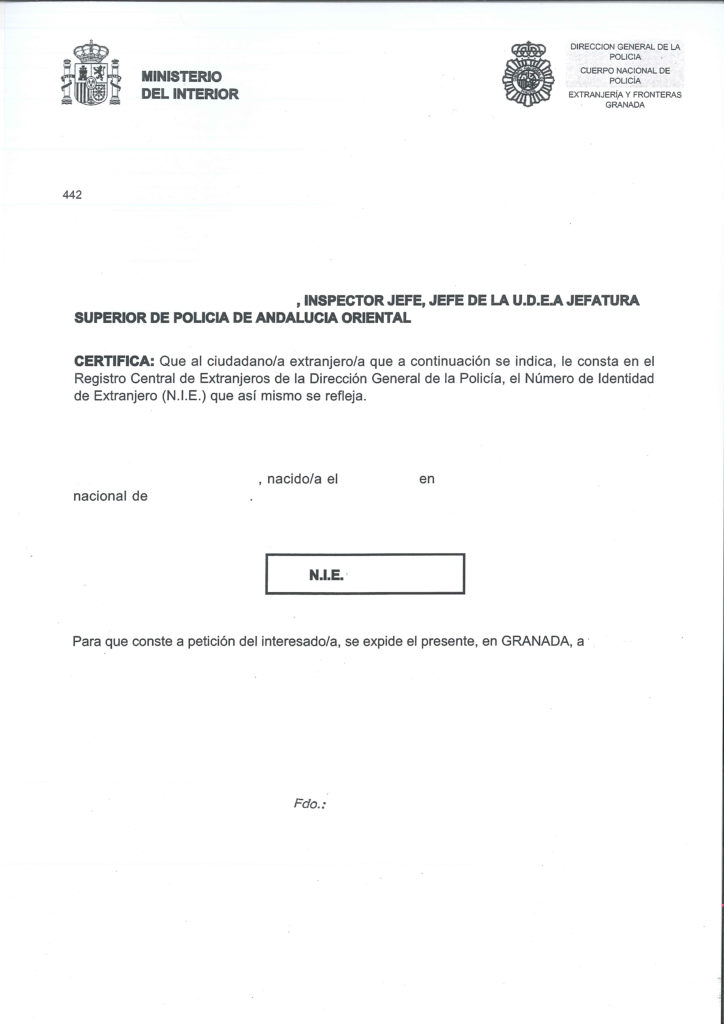
If you are thinking of being in Spain for over 3 months, you’ll need a Número de Indentidad de Extranjero (Foreigner Identity Number) or NIE. It is not just a mere formality in order for you to legally remain in Spain, but something you will practically need for lots of transactions, such as opening a current account, taking out an insurance policy, buying a house, getting a mobile phone, and many more.
Companies and people not living in Spain, but who have commercial or financial relations with Spain, may also need a NIE. Members of the public and self-employed people will follow the standard procedure to get a NIE.
Companies will have to apply for a Spanish Número de Identificación Fiscal (Tax Identification Number) or NIF. In this article, we will focus on private indivuduals and how they can get a NIE.
These are the most frequently asked questions when talking about getting a NIE:
Does the NIE expire?
No, the NIE is just an identification number, it doesn’t expire nor does it give you any type of authorization to live in Spain. If you already have a card with an expiry date, it will probably be la Tarjeta de Identidad de Extranjero (Foreign Identity Card) or TIE. The TIE is an identification card that is given to those immigrants that are going to live legally in Spain for more than 6 months. There is often some confusion because on the TIE the NIE appears as an identity number.
Is it compulsory to apply for it?
Yes, if you are planning to be in Spain for more than 90 days.
How to apply for a NIE
These are the steps to follow:
Step 1: Documents at the ready
You’ll have to get filled and ready the following forms:
-
Form EX-15 filled and signed.
You can download the instructions for filling in the form in English or in French. - The form to pay the fee in the bank.
You have to tick the box that says “Asignación de Número de Identidad de Extranjero (NIE) a instancia del interesado”. - A written document with a declaration of your reasons for applying for the NIE.
- Your passport (or identity card) and a photocopy of the entire document.
You can also get a paper copy of these forms at the Inmigration Office.
Step 2: Get an appointment to get your NIE procedure done
There is a paradox: For being able to pay the fee to receive your NIE, you need to have a NIE number already. So, your first visit to the Immigration Office is just to get the number written on your fee form.
You have to ask for an appointment in your local Oficina de Extranjería (Immigration Office) or the Policía Nacional (National Police Force).
You can book your appointment for the Immigration Office on the Internet or check the different procedures carried out in the police stations..
The Oficina de Extranjería de Granada is at calle San Agapito, 2 (Esquina Ribera del Beiro).
If you’re not familiar with the civil service in Spain, you should know that on arrival you have to confirm your appointment using the machine at the entrance. The machine will give you a ticket with your turn number. Then, you just have to wait for your turn to be announced on the screens in the waiting room.
If you don’t want to get an appointment on the Internet, you can also go to the Immigration Office or the police station and ask for an appointment.
Step 3: Go to the bank and pay the fee.
Now you have to take the fee form to the bank and pay it. You can go to whichever bank you like, it is not necessary to have a current bank account open with that bank. Be careful; many bank branches will only process this kind of transaction at specific times or on specific days of the week.
Step 4: Get another appointment with your local Oficina de Extranjería or Policía Nacional, this time for handing over the filled form, the other documents and the stamped fee form.
I have already explained in Step 2 how to book an appointment. Now all you have to do is to get a new appointment and take with you all the documents at the designated day and time and handing them over to the civil server.
If you think that you will be able to pay the fee the same day as the civil servant hands you the fee form, you can skip this step. What you have to do in this case in step 2 is ask the the civil servant to keep your first appointment and wait until they call you again after a while. This is the moment when you hand over your documents and your paid fee.
Step 5: Go back to the Oficina de Extranjería to collect your NIE certificate.
They may give you your NIE certificate the same day you submit your application, however, it is more probable that you will have to wait a few days. If you have to go back to collect it, you know what you have to do: get an appointment in the same way as before.
Do not expect an identification card. The NIE certificate is just an A4 paper certificate that says you’re assigned XXXX number as a foreign person in Spain. And remember: this document has nothing to do with your legal residence or your right to remain in Spain. Commonly, people say “NIE” referring to the residence card, but this is not correct, they are entirely different things.
In which cases do I not have to apply for a NIE?
If you have started certain other procedures that mean the civil service will assign you a NIE automatically, you won’t have to apply for a NIE. E.g. if you have initiated the procedure for getting a “certificado de registro de ciudadano de la UE” o “permiso de residencia”, that is: getting your legal residence.
How can I get a NIE if I am not in Spain?
If you’re not going to be in Spain but you need a NIE, you can apply for it in the Spanish consulate of your country or by proxy in Spain which requieres setting up a power of attorney for a trusted third party.
If you need help with the procedure for getting your NIE, feel free to contact me.

